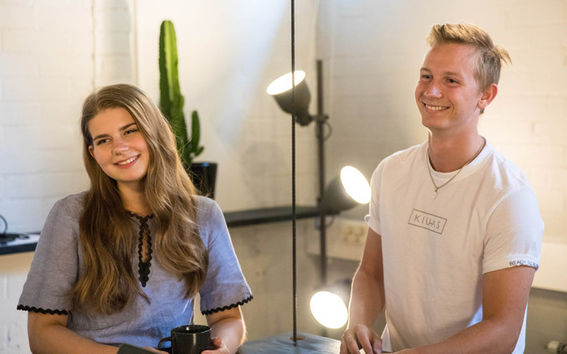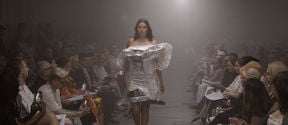Aaltoes organising Europe’s largest design hackathon

As a representative of Aalto University’s School of Arts, Design and Architecture, or ARTS, the second year design student Iida Palosuo is still a fairly unusual sight at Startup Sauna in Otaniemi. That’s also where Aalto Entrepreneurship Society, the student-driven entrepreneurial community, has its home base.
‘It has been fantastic to get such an enthusiastic and warm reception. There is plenty of demand here for the knowledge and skills of the people from ARTS’, Palosuo says. ‘Entrepreneurship is actually a very natural part of the field of arts and design, as so many become free-lancers or set up their own business once they have graduated. I hope that the upcoming joint campus will bring us students from different fields together more frequently in this respect as well.’
For its part, the design hackathon Dash, organised by Aaltoes for the first time this autumn, also shares the same goal.
Taking the double diamond
Whereas the traditional hackathon challenge starts with a company’s product and its development, the challenges of Dash are thematically broader: In addition to several partners, the solutions can benefit society as a whole. The entire design process is involved, which is often visualised with the help of a double diamond model. The user always takes on the most important part.
‘Putting one’s self in the position of the user is a natural way for people to solve problems – regardless of what field of study they are in. When this is combined with the skills and knowledge of a multidisciplinary team, which can include skills such as coding, visualisation, marketing, and business, the projects will be brilliant’ emphasises the father of the idea of the event, Axel Cedercreutz, who is in his second year of information networks studies at Aalto University.
The design process also includes questioning the original problem, which requires some background research. Consequently this hackathon has not been condensed into a single weekend. Instead, participants have the previous two weeks to learn about the backgrounds of the challenge.
Tailor-made health care
Dash has a total of five Fields of Design, which correspond to Junction hackathon’s Tracks, for instance. The teams can concentrate on questions such as the design of the learning environment, a game, or better health care.
‘With the help of multiple advancements, we are already able to get more information about our own health. But how could we develop the system so that we could also better affect the decisions concerning our health? How could the patient’s voice be better heard?’ Palosuo explains.
‘In Dash it is also possible to test completely new technology, but no specific technology is required to step up to the challenge. We believe that this freedom will also bring the best final results’, Cedercreutz adds.
Both Palosuo and Cedercreutz believe that the fact that the challenges are interesting, combined with the deeper immersion into them will inspire the teams to continue the development work with the partners even after the event. In addition, the organisers believe that the event will set off a spark among the participants.
‘Hopefully the participants will end up with a sense of having created solutions to a real challenge, as well as an understanding of the importance of multidisciplinary work. How useful it can be to have many angles for examining possible solutions to a problem’, Cedercreutz observes.
Further information:
Read more news

Professor Maarit Salolainen: ‘Multidisciplinary cooperation is the key to solving sustainability issues in the textile field’
Professor of Textile Design Maarit Salolainen wants to see closer cooperation not only between research in different fields but also between the university, the industry and resellers to bring about change.
Donor story – Helena Hyvönen: ‘The world is built together, without silos’
Helena Hyvönen has had a long career as Professor of Textile Art, Rector and Dean at the University of Art and Design Helsinki and later Aalto University School of Arts, Design and Architecture. She believes it is important for the field to have a vibrant community of designers. The designers also have a lot to offer to the university.
Näytös24 was a celebration of creativity and personality
At the annual Aalto University Fashion Show, a total of seven prizes were awarded to fashion students' works. Innovation, high technical skills and sustainability were emphasised in the award criteria.